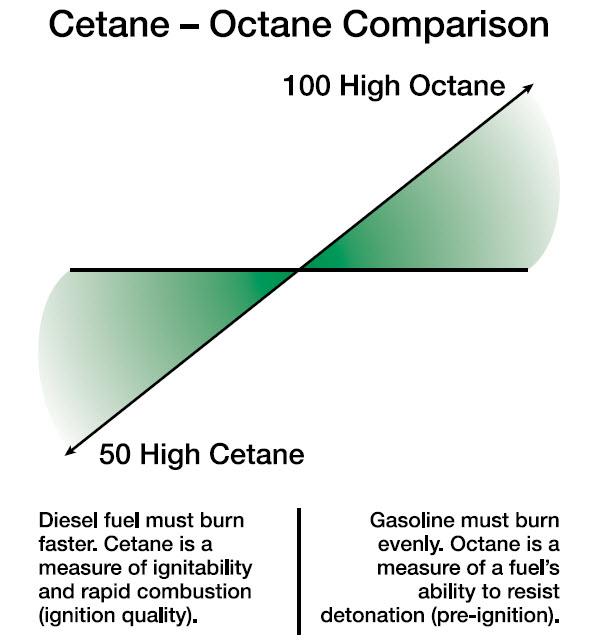- Replies 20
- Views 4.7k
- Created
- Last Reply
Top Posters In This Topic
-
 AH64ID 8 posts
AH64ID 8 posts -
 ISX 6 posts
ISX 6 posts -
 Mopar1973Man 4 posts
Mopar1973Man 4 posts -
 elshadow001 1 post
elshadow001 1 post



Maybe some of you have read this page http://mopar.mopar1973man.com/cummins/general/2-cycle-oil/cetane/cetane.htm well I am going to prove it. Words don't always get the idea across and I want you all to see what happens when you vary the cetane. First off, cetane is the ignition quality of fuel and by that I mean it determines how long it takes the fuel to ignite when heated to it's autoignition point. The bigger the number, the shorter it takes to blow up. We can show this with math and crap, OR, we can show this with some extreme fuel choices. I think you all know motor oil does not ignite very well. On the other hand, power service will ignite quickly. Motor oil has a very low cetane, power service has a very high cetane. Now here is how the engine works with cetane. The piston comes up and has so much compression that it heats the air to a very high temperature, higher than the autoignition temperature of fuel (~450F). A little before top dead center, fuel is injected into the combustion chamber. This fuel absorbs the heat that is in the very hot air, and ignites. Cetane comes into play when the fuel ignites as I stated previously. So why is this so critical? Well the engine only has a limited amount of time to get the fuel to ignite. When they say the timing is 14 degrees before top dead center, they mean the fuel is injected 14 degrees crankshaft rotation before TDC. Obviously it would be a disadvantage for the fuel to ignite before TDC since it would be trying to push a piston down that is still trying to come up. RPM play a key role in this. The faster an engine is turning, the less time BTDC the engine has to get the fuel to ignite. This is why truck pullers advance their timing to degrees over 20, because they are revving so high that they need more time to get the fuel to burn, so they inject it in sooner. If your engine turns slower, say 1000RPM, your most efficient timing might be somewhere in the single digit degree range, because it has a lot of time before it gets to TDC. As the engine RPM goes up, timing needs to advance so that the engine will be injecting fuel at the perfect time, not too soon and not too late. The knocking is actually a sign that it is injecting too soon because it is igniting before TDC. When I advanced my timing, it would knock at idle, when I retarded it back to stock, it was back to being quiet. The p7100 trucks have static timing, so mine is always the same. I just showed how timing needs to change so p7100 trucks must be set for the best setting for most drivers. Retarded enough to start good, yet advanced enough to be efficient at cruising RPM. Now that you know about timing and cetane, I can explain why you see what you see in the video. My truck idles with the needle just scratching the line under 1000, on diesel fuel. So with cetane at 40 or whatever the summer fuel I get is, it ignites and provides the power for that rpm. When I changed over to the motor oil, my RPM dropped a lot. Motor oil contains the same amount of energy as diesel, if not more, so it would make sense that my rpm would go up, but that obviously doesn't happen. So what gives! Damn oil is worthless! No, the truth is that the oil has a very low cetane compared to diesel. So the delay is very long. So long that the oil ignites after the engine has reached and gone past TDC. The oil is only exploding on part of the power stroke because it took so long to ignite. In theory, if we advanced the timing a lot, we could get the RPM's back up.
Now lets say you are running vegetable oil. Now your cetane is very high. It will knock more because it is igniting very soon. In this case it would be beneficial to retard timing.
No, the truth is that the oil has a very low cetane compared to diesel. So the delay is very long. So long that the oil ignites after the engine has reached and gone past TDC. The oil is only exploding on part of the power stroke because it took so long to ignite. In theory, if we advanced the timing a lot, we could get the RPM's back up.
Now lets say you are running vegetable oil. Now your cetane is very high. It will knock more because it is igniting very soon. In this case it would be beneficial to retard timing.
http-~~-//www.youtube.com/watch?v=fAmgB2sJlPg